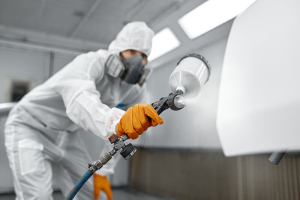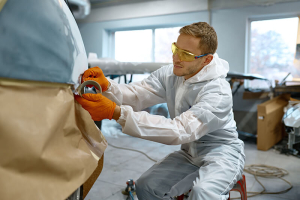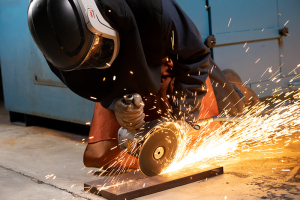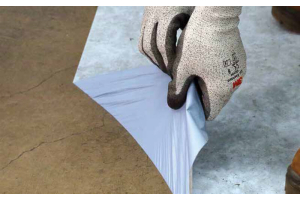The Easy Way to Protect Your Hearing
Noise is everywhere
Sound is the most pervasive pollutant on the planet, with nearly 30 million Americans working in hazardous noise environments daily. The National Institutes of Health estimates that as many as 28 million people across the nation suffer from hearing loss, with about a third of those cases caused by noise.
Hearing loss due to noise is almost entirely preventable with the regular use of a hearing protection device. Hearing protectors may feel uncomfortable at first, but there is an adjustment period just like with shoes or glasses, so patience is crucial. And the more carefully you fit and wear your device, the higher your protection will be.
When wearing hearing protection, you'll still be able to listen to quieter sounds like a colleague talking. As a matter of fact, when correctly wearing a hearing protection device, you'll be safe from temporary hearing shifts like when a loud environment suddenly becomes quiet. Let's take a look at some of the hearing protection options at your disposal.
Foam, premolded, semi-insert and earmuff protection
Of the four types of ear protection available, foam plugs provide the best combination of comfort and protection for most users. Made from expandable, slow-recovery foam, these plugs are available in one size, and once in the ear, foam plugs expand to provide a snug and secure custom fit. Most complaints about foam plugs focus on a lack of protection or that they don't stay in the ear, but they're usually solved with a bit more attention when inserting them.
Pre-molded plugs are different from the foam plugs in that they're made from flexible materials instead of foam, and they also come pre-formed to fit the ear. They often come with a joining cord to prevent loss and are sold in two or more sizes. This kind of hearing protection device must be individually sized for each ear and may not be a usable option for everyone.
Semi-insert hearing protection devices, also called canal caps, are made out of pods, or flexible tips, on a lightweight headband. Semi-insert options, like the 3M™ E-A-R™ Swerve™ Banded Hearing Protector, is usually selected because semi-insert devices are quick to put on and take off, and easy to keep wrapped around the neck, making it an ideal solution for intermittent use.
Earmuffs offer hearing protection made out of rigid cups with soft plastic cushions that seal around ears to keep the noise out. Muffs are available in one-position or multi-position bands, and offer options to attach directly to a hard hat, like the 3M™ Peltor™ X5 Earmuffs. The cushioning on an earmuff may be filled with foam, liquid, or a combination of materials to suppress noise, and can be combined with an earplug for superior protection.
Hearing protection tips and tricks
Noise doesn't need to be painful to be damaging, and hazards depend on the intensity of the sound, it's duration, and the frequency of exposure. You may think you've adjusted to the noise, but it's far more likely your hearing has been dulled or hearing loss has already begun. A decent rule to follow is if you need to shout to be heard from three feet away, hearing protection will probably help.
Whether it's an earplug or a muff, you can tell if your hearing protection device fits properly by listening for the occlusion effect. The occlusion effect is when you hear your voice become deeper, hollow or muffled, and if you don't hear that change (or if it's inconsistent between ears), you don't have a proper seal in either one or both of your ears.
If you notice a ringing or buzzing in your ears after being exposed to a loud work environment, it's a warning indicator for tinnitus. Tinnitus is a symptom of hearing loss, damaging the nerve cells of your inner ear, almost like it's a kind of an aural "sunburn." If you don't consistently protect your ears from noise hazards, tinnitus can become a permanent, constant condition that's extra obvious in quiet places, like when you're trying to go to sleep.
Alternatively, when you hear sounds muffling or softening after being exposed to extreme noise, that's an indication that your hearing is affected by a temporary threshold shift. Repeated exposure without protection can cause untreatable damage to your hearing and eventually become a permanent condition.
Ready To Learn More?
For more information on hearing protection, please visit our Hearing Protection section today.
30-Second Summary:
- ✔ The National Institute of Health estimates up to 30 million Americans working in hazardous noise, with over nine million suffering from preventable hearing loss.
- ✔ Hearing damage can occur even when noise doesn't seem to be overtly loud, and depends more on sound intensity, frequency and duration.
- ✔ When worn correctly with a proper fit, hearing protection will prevent hearing loss from virtually any sound.
- ✔ There are four major types of hearing protection available today: foam plugs, pre-molded plugs, semi-insert devices, and earmuffs.
- ✔ Foam ear plugs come in one size and expand in the ear to provide a snug and secure fit customized to your ear.
- ✔ Pre-molded plugs are formed to fit the ear, and need to be individually sized for each unique ear.
- ✔ Semi-insert hearing protection devices can be easily and quickly put on and taken off during sporadic use.
- ✔ Earmuffs create a seal around the ear to keep loud noises out, and can be combined with ear plugs for superior protection in extreme environments.











